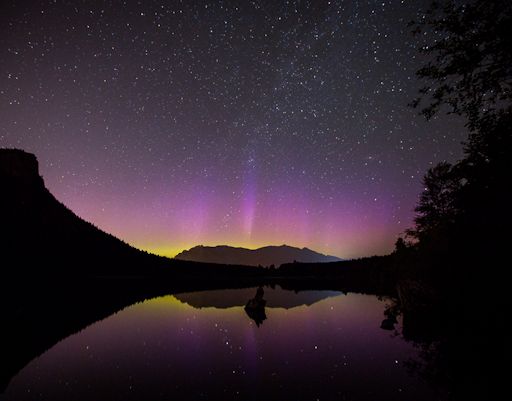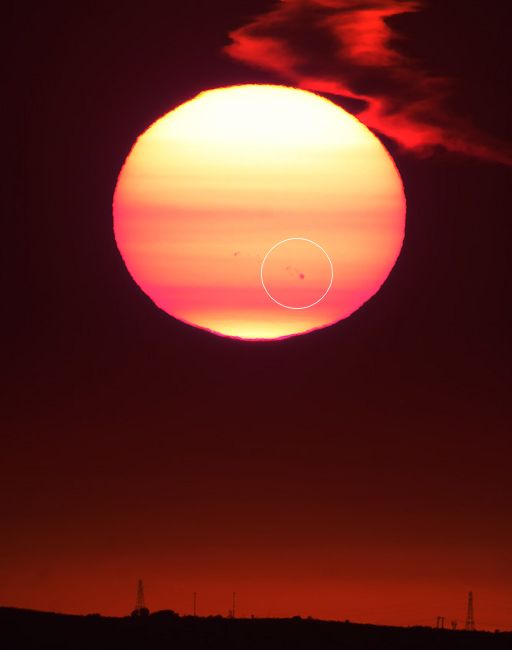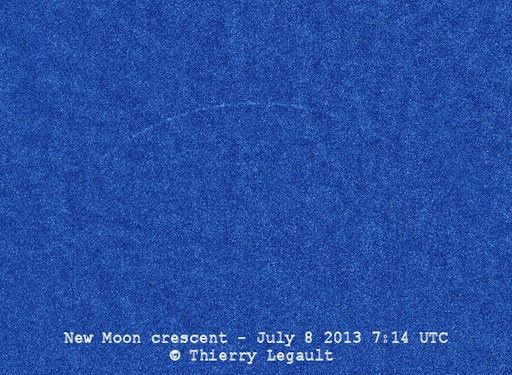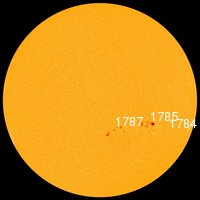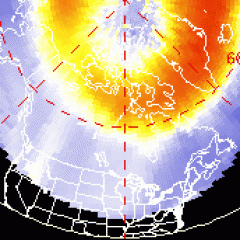WEAK IMPACT, NICE AURORAS: A minor CME hit Earth's magnetic field on July 9th at approximately 20:30 UT. The impact was weak, and at first had little effect, but in the hours following the strike a geomagnetic storm developed. At its peak during the early hours of July 10th, the G1-class storm produced auroras in northern-tier US states from Wisconsin to Washington. Jim Reitz sends this picture from Rattlesnake Lake, about 30 miles east of Seattle:
The storm is subsiding now, but the aurora watch is not over. Solar wind conditions continue to favor Northern and Southern lights at high latitudes. NOAA forecasters estimate a 40% chance of polar geomagnetic storms on July 10th. Aurora alerts: text, voice.
SUNSPOT SUNSET: Despite its unstable magnetic field, big sunspot AR1785 has resisted exploding. Even so, it's putting on a good show. Pete Lawrence of Selsey UK photographed the active region as a dark-mark in the sunset on July 9th:
"Summer has arrived in the UK and there have been some fantastic sunsets," says Lawrence. "This one was a beauty with the current crop of sunspots in view."
Pretty sunsets could give way to actual solar flares if the magnetic field of AR1785 finally erupts. For the 5th day in a row, flare probabilities remain high: NOAA forecasters estimate a 55% chance of M-flares and a 10% chance of X-flares on July 10th. Solar flare alerts: text, voice.
THE THINNEST CRESCENT: Astrophotographer Thierry Legault is known for his razor-sharp images of spacecraft. This week, for a change of pace, he photographed a razor-sharp crescent:
"This image shows the tiny lunar crescent at the precise moment of the New Moon, in full daylight at 7h14min UTC on July 8 2013," says Legault. "It is the youngest possible crescent, the age of the Moon at this instant being exactly zero."
"From the shooting site in Elancourt, France, the angular separation between the Moon and the Sun was only 4.4° (nine solar diameters)," he continues. "At this very small separation, the crescent is extremely thin (a few arc seconds at maximum) and, above all, it is drowned in the solar glare, the blue sky being about 400 times brighter than the crescent itself in infrared and probably more than 1000 times brighter in visible light. In order to reduce the glare, the images have been taken at near-infrared wavelengths using a pierced screen placed just in front of the telescope to block direct sunlight."
Legault's photo may have theological as well as astronomical significance. In the Muslim world, the New Moon of July 8th and the sighting of the first crescent afterward sets the stage for the beginning of Ramadan 2013.

Solar wind
speed: 445.2 km/sec
density: 1.6 protons/cm3
explanation | more data
Updated: Today at 2316 UT
X-ray Solar Flares
6-hr max: B8 2246 UT Jul10
24-hr: C5 0640 UT Jul10
explanation | more data
Updated: Today at: 2300 UT
![]()
Daily Sun: 10 July 13
Sunspot AR1785 has a beta-gamma-delta magnetic field that harbors energy for X-class solar flares. Credit: SDO/HMI
![]()
Sunspot number: 98
What is the sunspot number?
Updated 10 Jul 2013
Spotless Days
Current Stretch: 0 days
2013 total: 0 days (0%)
2012 total: 0 days (0%)
2011 total: 2 days (<1%)
2010 total: 51 days (14%)
2009 total: 260 days (71%)
Since 2004: 821 days
Typical Solar Min: 486 days
Update 10 Jul 2013
The Radio Sun
10.7 cm flux: 120 sfu
explanation | more data
Updated 10 Jul 2013
![]()
Current Auroral Oval:
Switch to: Europe, USA, New Zealand, Antarctica
Credit: NOAA/POES
![]()
Planetary K-index
Now: Kp= 4 unsettled
24-hr max: Kp= 5 storm
explanation | more data
Interplanetary Mag. Field
Btotal: 8.6 nT
Bz: 5.6 nT south
explanation | more data
Updated: Today at 2317 UT
![]()
Coronal Holes: 10 Jul 13
There are no large coronal holes on the Earthside of the sun. Credit: SDO/AIA.

